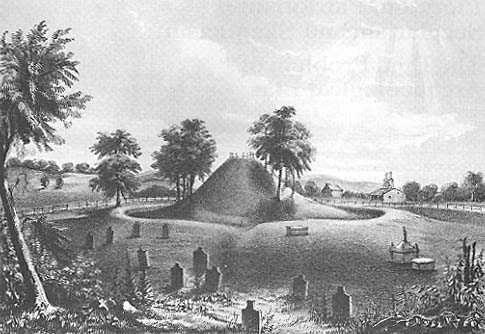Who First Excavated Stratigraphically?
Hint: He was an American. Dead giveaway: You’ve known his name since first grade.

North American Indians left few monuments of their civilization. Early European explorers and settlers in North America found no stone cities or defense walls or water systems or monumental structures built by the native Americans. The only exceptions were large earthen mounds obviously built by humans rather than formed by natural forces.
Some of these mounds were shaped like large round hillocks. Others were shaped like truncated pyramids. Still others had the form of animals or birds. Many had large trees growing on top of them, attesting to their great age. Some were made of earth; others were constructed of loose stones. They also varied in size. Some were 40 to 50 feet in diameter and seven or eight feet high. Others, however, were immense. One, near present-day Miamisburg, Ohio, was nearly 80 feet high and contained over 300,000 cubic feet of earth. Another in what is now Illinois was over 100 feet high; its perimeter was over 3500 feet. Its base was almost 200,000 square feet larger than the Great Pyramid at Giza in Egypt.
The prevailing view in the late 18th century and early 19th century was that these mounds could not have been built by the Indians, but had instead been built by the Ten Lost Tribes of Israel or their descendants. (Some people did contend that the American Indians were the descendants of the Ten Lost Tribes, but many others denied that the Indians were even human; they based their argument on the fact that Indians were not mentioned in Genesis and therefore were not descendants of Adam and Eve.)
Already a library member? Log in here.
Institution user? Log in with your IP address.

